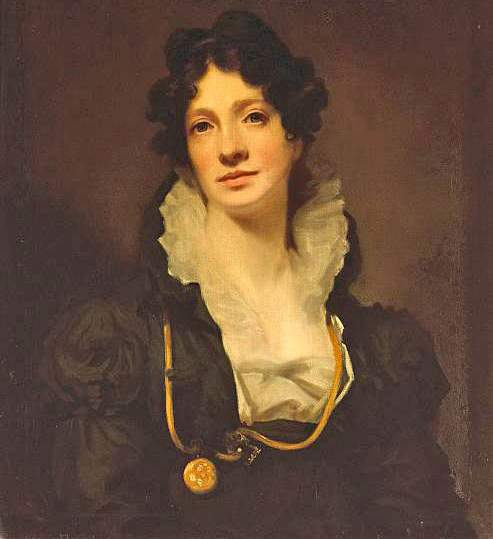ONE of the outstanding men of Helensburgh’s past served as Provost of the burgh twice and is considered to be the father of Clyde yachting.
He is mostly referred to as James Smith of Jordanhill, but Donald MacLeod’s 1883 book ‘A Nonogenarian’s Reminiscences of Garelochside and Helensburgh’ states that he lived in the district almost all his adult life.
James Smith became the third Provost of Helensburgh and served from 1828-34, succeeding steamship pioneer Henry Bell and his successor, Jacob Dixon of Rockbank, and again in 1853.
The son of an old Strathblane family, he was born in Glasgow on August 15 1782. He was educated at Glasgow Grammar School and Glasgow University.
He joined his father’s West Indies trading company and lived in part of Rosneath Castle and later at Jordanhill, but is best remembered as one of the first enthusiastic Clyde yachtsmen.
He was keenly interested in geology, sea shells and voyages to the Arctic regions, and his knowledge of Greenland resulted in pioneers naming Cape James, Cape Mary and Jordanhill Island after him and his family.
James was the eldest of five children, and he and his younger brother Archibald eventually took over his father’s business. It became James and Archibald Smith & Co. — with brother Archibald doing most of the work.
James Smith was a zealous and efficient officer in the Renfrewshire Militia, and for some years his military duties occupied his whole time.
He was never idle, and even when pursuing his favourite pastime of yachting he was also studying nature and geology.
His accurate research, and his life-long love of the sea, led to many valuable discoveries, and he was recognised as one of the very earliest founders of the now accepted theory of the glacial period in the British Isles.
He owned a yacht from 1806, and won many cups, and he was cruising in his own well-known cutter, the ‘Wave’, in 1866, the year before his death. Members of his crews were proud of their skipper.
He was one of the earliest members both of the Royal Yacht Club and the first Commodore of the Royal Clyde Yacht Club — now part of the Rhu-based Royal Northern and Clyde Yacht Club where there is a portrait of him.
For many years his constant companion when afloat was Dr Scouler of the Andersonian University, which became Anderson College of Medicine in Glasgow, and James served as its president.
He was a Biblical scholar, and his great work, ‘The Voyage and Shipwreck of St. Paul, and Dissertation on the Life and Writings of St. Luke, and the Ships and Navigation of the Ancients’, had many editions and was very highly regarded.
The Edinburgh Review said of it: “The book is full of solid proof and valuable suggestion, and we may safely say that a more valuable original contribution to Biblical knowledge has not been made by any countryman of ours during the present century.”
He was an amateur archaeologist, a patron of artists, and contributed to the Royal Societies of London and Edinburgh, the Geological Society and the Royal Geographical Society, of all of which he was a Fellow.
He was an elder of the Church of Scotland at Renfrew, and a Conservative in politics, unsuccessfully contesting the burgh of Greenock in 1837.
He married Mary Wilson, granddaughter of a distinguished astronomer, in 1809 and they had two sons — Archibald, who became one of the best mathematicians of his day — and seven daughters. Three did not survive childhood.
In the late 1830s, two of the daughters, sent to school in London, contracted a virulent form of tuberculosis.
Their parents took them to Madeira in the hope that the climate there would cure them, but one died there, and the other died in London on the way home.
A third daughter showed signs of infection, and it was clear that drastic measures were needed, so they went to live — and sail — in Portugal, Spain, Gibraltar and then Malta for a few years in the search for good health.
His life ended peacefully in his 85th year at Jordanhill on January 17 1867, some 20 years after the death of his wife from pneumonia.
 Donald MacLeod wrote that James Smith did much to advance the interests of the burgh.
Donald MacLeod wrote that James Smith did much to advance the interests of the burgh.
He added: “He was a man of large and liberal means, and had he been supported by men of kindred mind he would have accomplished much more in the way of improvement than what he was able to undertake.
“He was a man of active temperament and large-hearted impulses, as well as a reliable friend, and a ready supporter of whatever approved itself to him as tending to the general good or advancement of science.”
One example of his generosity was when he bought the Baths Hotel in 1827, three years before the death of Henry Bell, to allow Mrs Margaret Bell to continue in management of what later became the Queen’s Hotel.
Several months of each year were spent there, and the Smith family owned it for the next sixty years.
Those of the family who liked sailing loved every moment, and those who did not bemoaned the cold and damp.




